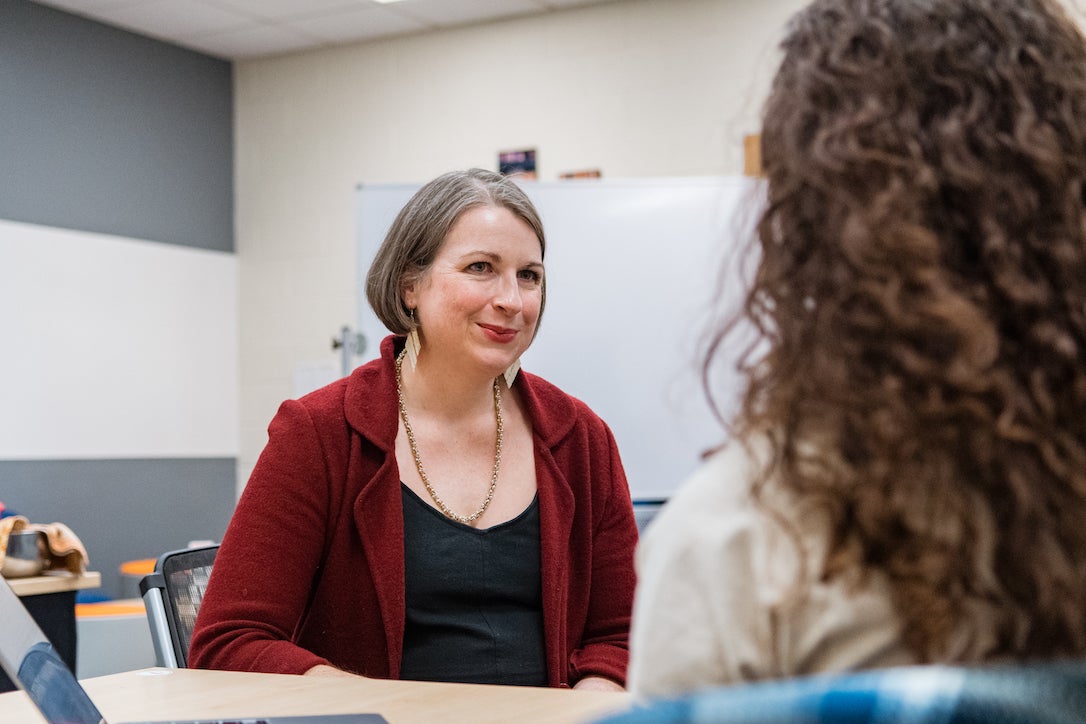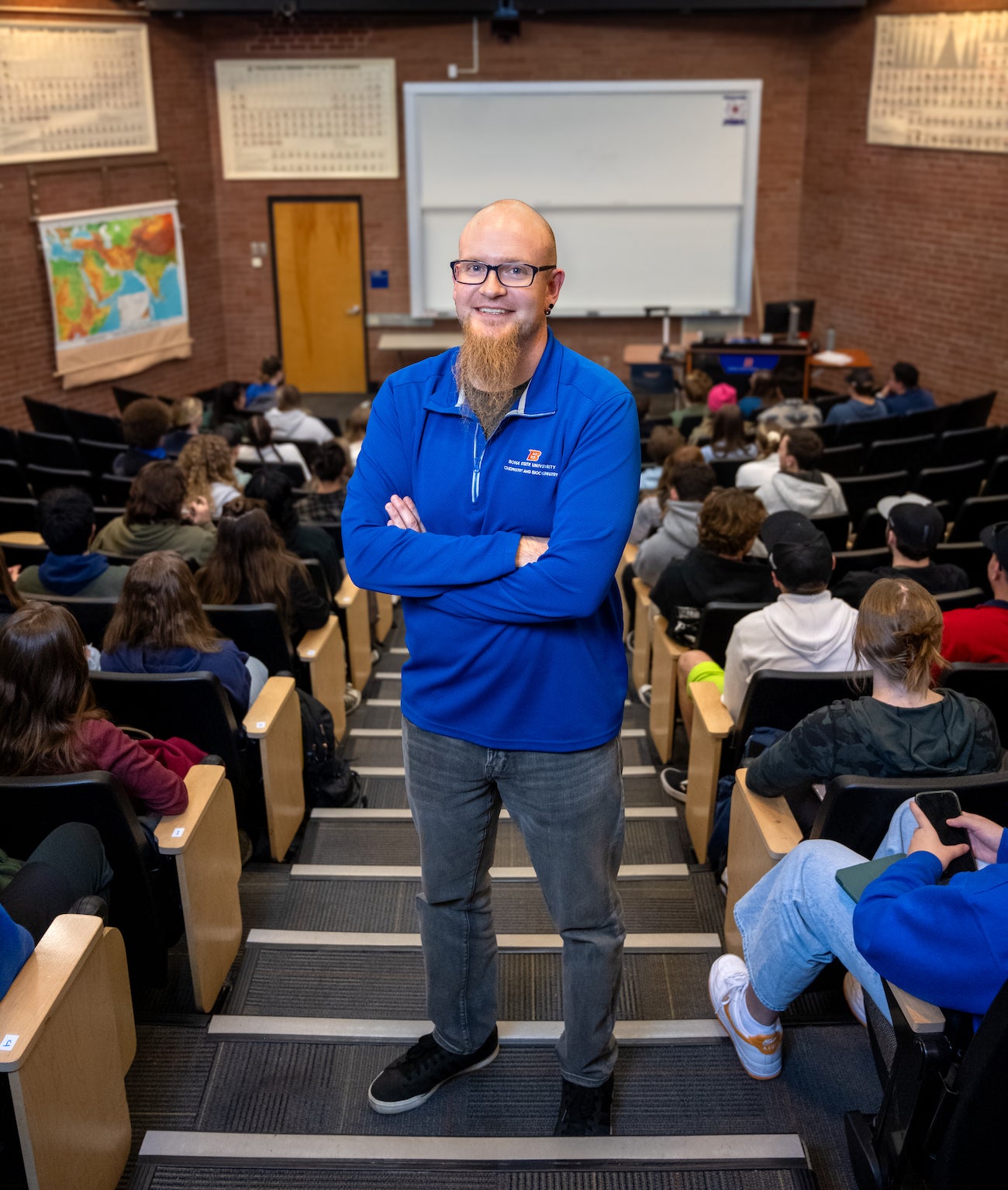
By Jodie Nicotra
College can be tough if you haven’t grown up in a home where the rules and traditions of campus culture are familiar and college attendance is a foregone conclusion. Academic achievement gaps can open between students who are acquainted with college life and those who aren’t, even prompting some to leave.
When Boise State administrators discovered these gaps, they sought solutions where student difficulties first come to light: the classroom. Inspired to help students with particular challenges – Idaho residents who live off campus and are eligible for Pell grants – they created the Designing for Student Success Faculty Learning Community in the Center for Teaching and Learning. The program brings faculty together to better understand the barriers some students face and to adjust their teaching for better outcomes.
Sarah Dalrymple, an associate professor of biology, developed the faculty learning community with Susan Shadle, vice provost of academic affairs, and Devshikha Bose, a senior education development specialist. Dalrymple believes faculty can make critical interventions for students.
“If an individual student fails a course, they’re less likely to return the following semester,” she said. “We’re trying to solve institutional patterns, but we’re choosing to do it through faculty, because what happens in the classroom really matters.”
Many faculty members in the cohorts teach at the introductory level, including large courses that can be difficult for students to navigate but that are critical prerequisites for majors and key to student retention.
A community of learners
The Designing for Student Success Faculty Learning Community welcomed its first group of faculty in spring 2019. The program consists of a series of workshops centered on research-based practices proven to reduce equity gaps at the course level.

At the beginning of each semester, leaders share GPA and drop/fail/withdraw rates in their courses. In almost every case, the data reveals equity gaps for the targeted student population.
Chris Saunders, a clinical associate professor of chemistry and a member of the first cohort, was surprised by his data.
“I thought that my courses from an aggregated perspective looked pretty good,” Saunders said. “But when it was disaggregated, I was not doing better by the students who needed it most. It was hidden. And it was very eye-opening.”
To address these equity gaps, faculty members have needed to rethink their courses, armed with a better understanding of the psychological and cultural barriers some students face.
For instance, many students who are the first in their families to attend college lack insider knowledge about how college works. Other students wrestle with “stereotype threat,” the fear of confirming negative views of their social group. Both barriers can lead students to underperform.
How to break a barrier
Faculty members in the cohorts have addressed these barriers in different ways.
Jenn Mallette, an associate professor of English, was also a member of the first cohort. She said that thanks to the faculty learning community, she now reads her syllabi with a critical eye for ways they may unintentionally confuse or exclude students. For instance, she’s made changes to her late work policies.
“Students think the penalties are fair because they’ve gotten used to them. But what does fair mean?” Mallette said. “What’s fair for one student isn’t necessarily fair for another.”
Mallette points out that many of her students are neurotypical, able-bodied, and don’t have things like caretaking or work competing for their attention to schoolwork. But others may be neurodivergent, struggling with health issues, caretaking or commuting 50 miles to campus.
“So me giving an extension to a student who needs it doesn’t detract from students who turned in their work on time,” she said. “Those two groups of students are very different, so what can we do to help level the playing field?”
After participating in the faculty learning community, Mallette changed the language she uses when she communicates with students who are struggling in her classes, letting them know that many students struggle with similar issues and offering resources.
For his part, Saunders has been more deliberate in helping his first-year students understand and prepare for the expectations of college-level work.
“Students are convinced that chemistry is the problem, that they’re bad at chemistry,” he said. But the real issues are time management and college expectations. Now Saunders’ students start his course by building a schedule and designating study times for chemistry.
Saunders also changed the way he approaches exams, emphasizing transparency in helping students prepare.
“I try to not make it a mystery, to be really intentional rather than throwing them in the deep end of the pool and seeing who sinks and who swims,” he said.
Changing attitudes
Evidence suggests that the faculty learning community is working. The 2019 cohort showed that, on average, the equity gaps in their courses were reduced by almost half. Subsequent cohorts dealt with pandemic-based challenges, but equity gaps still either stayed the same or improved.
Dalrymple noted that perhaps the most important change made by faculty who participate is a shift in attitude.
“Faculty leave with more of an appreciation of the kinds of things that students are going through,” she said.